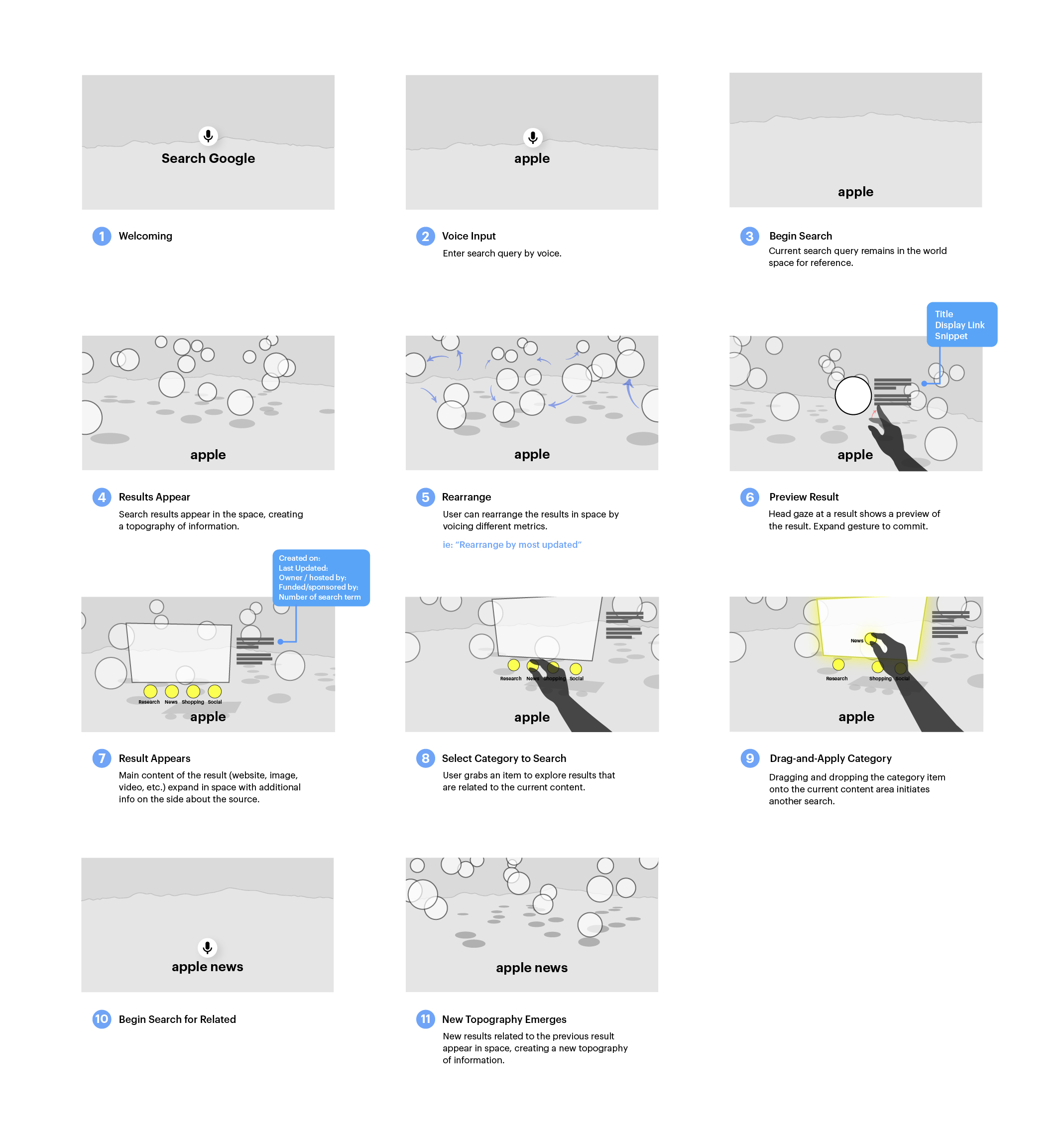3D Search Engine
Exploring ways in which three dimensional space can encourage mindfulness in our relationship with information on search engines. Search engines are critical access points for daily consumption of information, and freeing up the space on these platforms could help us navigate the digital landscape.
Details
2018
Type
Design Concept
Rapid Prototyping
Tools
Unity
After Effects

Problem Space
How can three dimensional space help us navigate the world of information in a more mindful way?
However divergent Google Search Engine Results Page (SERP) attempts to create the search experience to be through tools such as "People also search for" and "Similar", user's ability to grasp a holistic understanding of the available information will remain limited to their ability to remain engaged with the results.
Research
The linear stacking of content blocks limits our ability to understand the landscape of information.
A 2015 study conducted by Deeswe and Kosala identified that people generally do not open more than the first six links presented on the result page.
The key question to ask is, "Do I feel like I'm looking through a peephole?" The frustration in the Information Age stems from the feeling of having a tiny peephole to view the sea of information.
Creating search engine experiences that encourage mindful interactions with information could lead to less misinformation.
So, how do we evaluate credibility in search engines now?
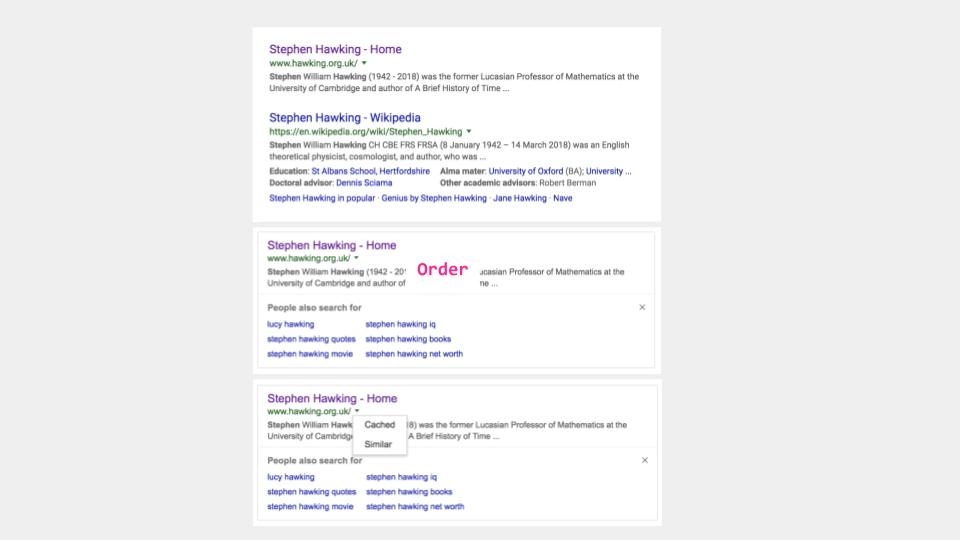
Order of Results
Google displays results on the search engine results page (SERP) by using an algorithm called PageRank. Factors such as frequency of keyworks, quality of website, and number of backlinks that exists with the page determines the order of websites that are presented on the SERP.
1/5
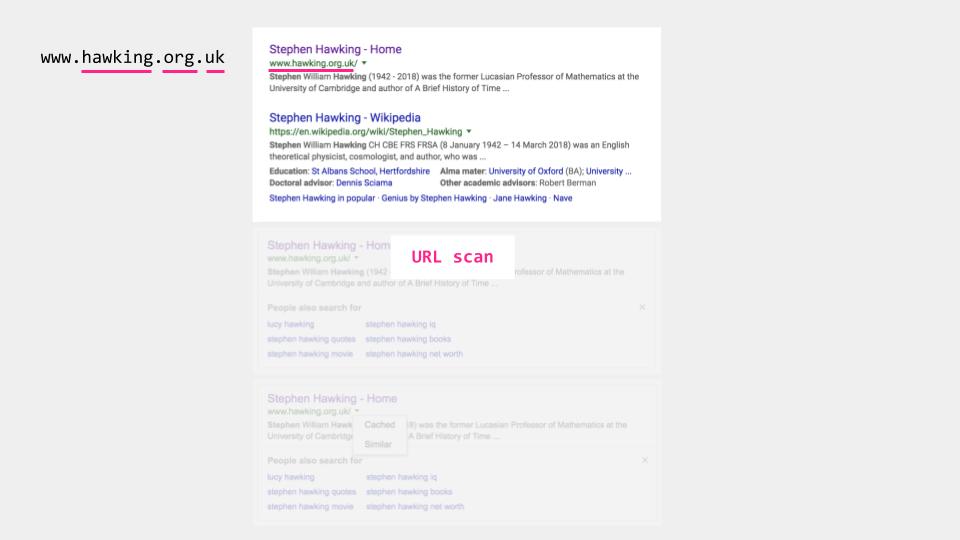
URL Scan
A quick scan of the URL helps users get a general sense of the source of the information. The domain name, domain extension, and geographical domain in the URL can quickly help users understand "who" uploaded the information.
2/5

Description Relevance
The small preview of the text content of the site, along with the bolded keywords give users a slightly clearer idea of the type of information that surround the keywords.
3/5
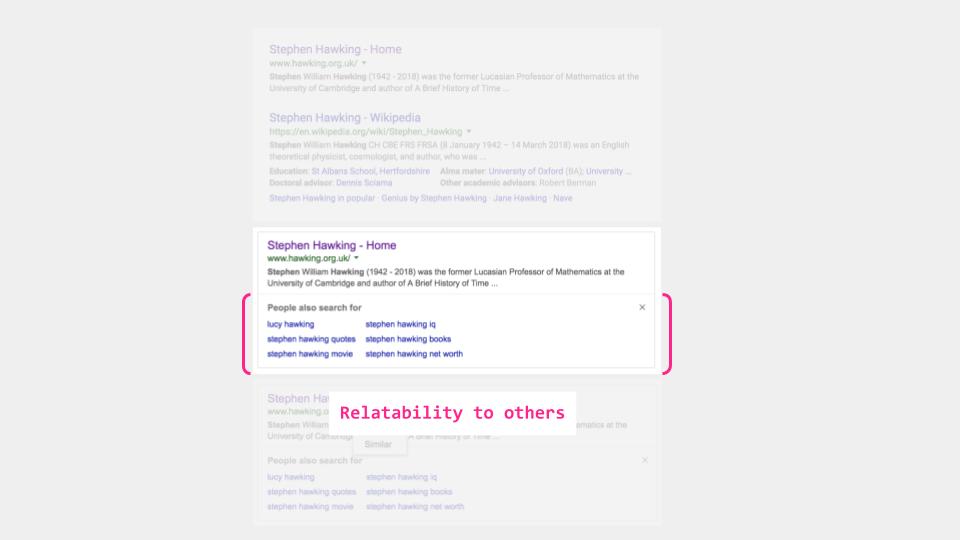
Relatability to Others
The SERP presents queries that other users have searched, along with the original keyword. This encourages the user to engage in an alternative search that is broader or narrower from the original search.
4/5
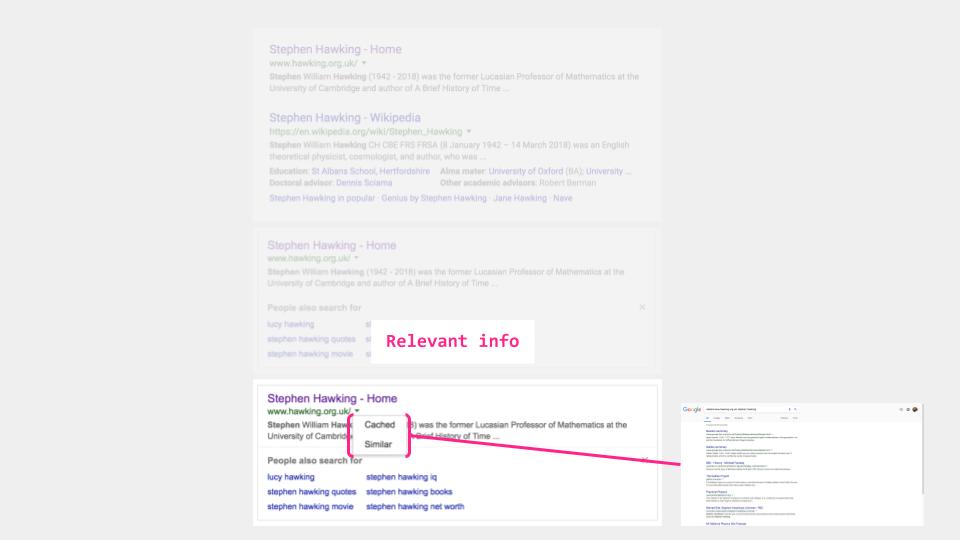
Relevant Information
A hidden dropdown "Similar" button directly searches the complete URL of the respective result page, to encourage a divergent research behavior.
5/5
❮
❯
Opportunity in the Space
Freeing up the space from 2D to 3D opens up the possibility to add more metrics. What if the spacial arrangement of the search results could be displayed and rearranged depending on different metrics, such as relevant key words, relation to previously trusted sources, or recommendation by experts? Below are a few examples of how three dimensional space could provide a range of opportunities for users to interact with search engine results in different ways.
Sketch
With these possibilities in mind, I began to explore different experiences. The key challenge was to design an experience that helped users feel well-informed without overwhelming them. A round of quick sketches and prototypes helped me realize that giving a sense of control to sift through, organize, reorganize, and possibly personalize the information was an effective way to approach the challenge.
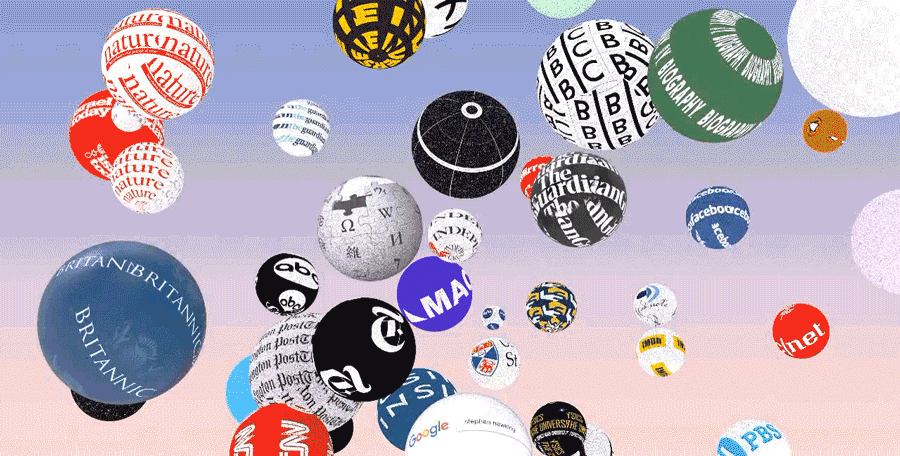
Quick sketch of the universe on Keyshot

Initial experience exploration
Sketch of an experience on After Effects
Back to the Board
The initial round of storyboarding and visualization of 3D Search World unlocked a wide range of curiosities, ranging from perception of information, opportunities in interaction, and ease in understanding of space. Leveraging the opportunities that the open space could offer in both interaction and data visualization was a challenge. With this in mind, I went back to the drawing board to refine the user journey.
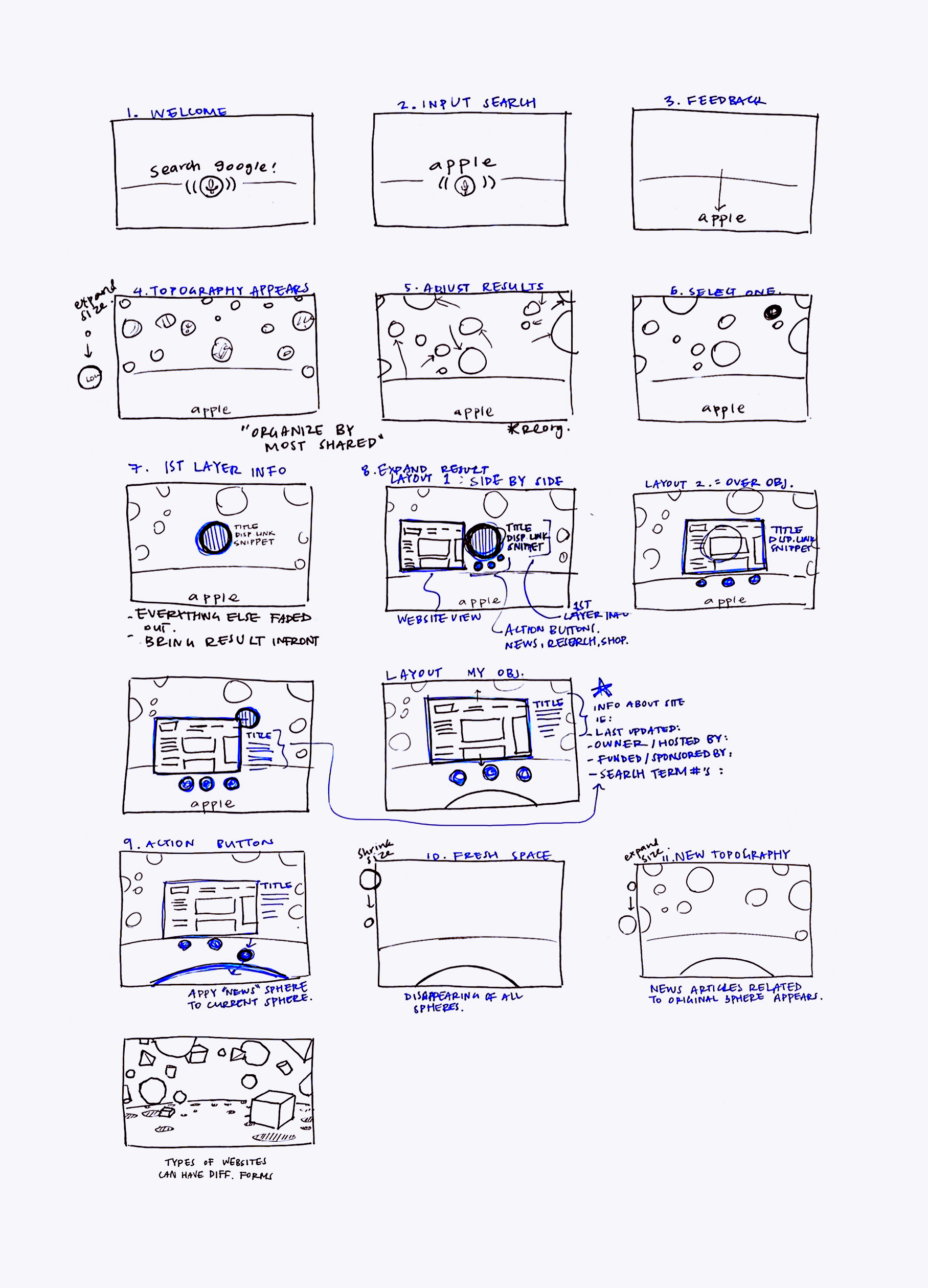
Interactive Prototype
With the user journey and experience design in mind, I moved onto building an interactive VR prototype on Unity, with Google Custom Search API, IBM Watson Speech to Text, and a fun Google Cardboard. The prototype was built to provide an immersive experience inside the universe of Google Search.

Entering search term, search results appearing in space
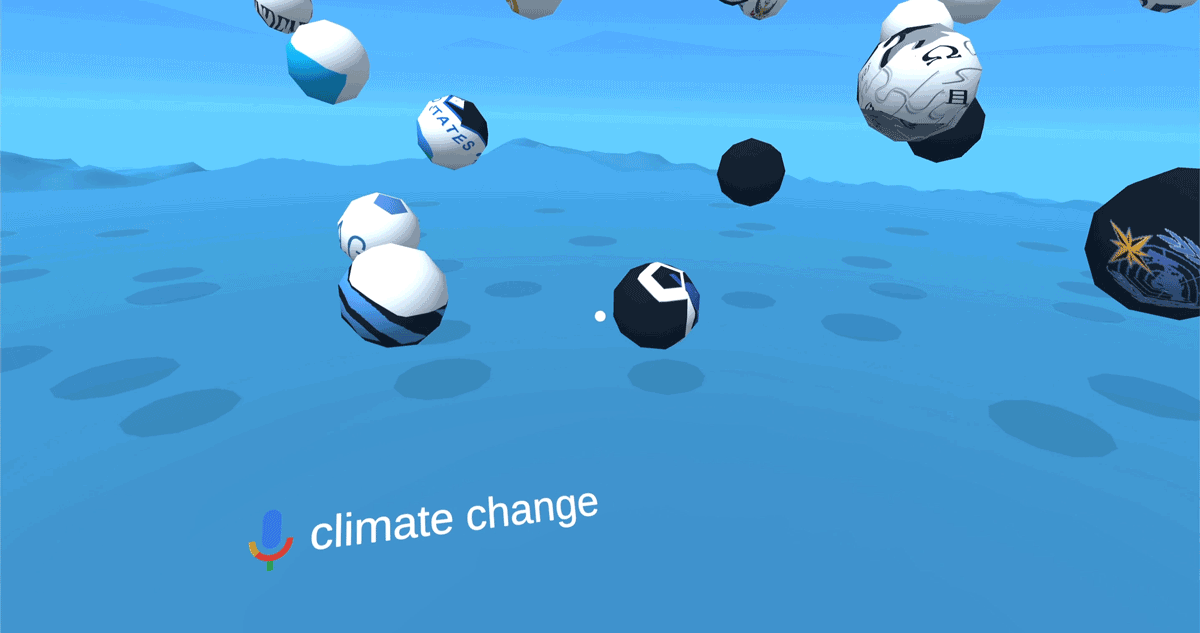
Previewing information about the results
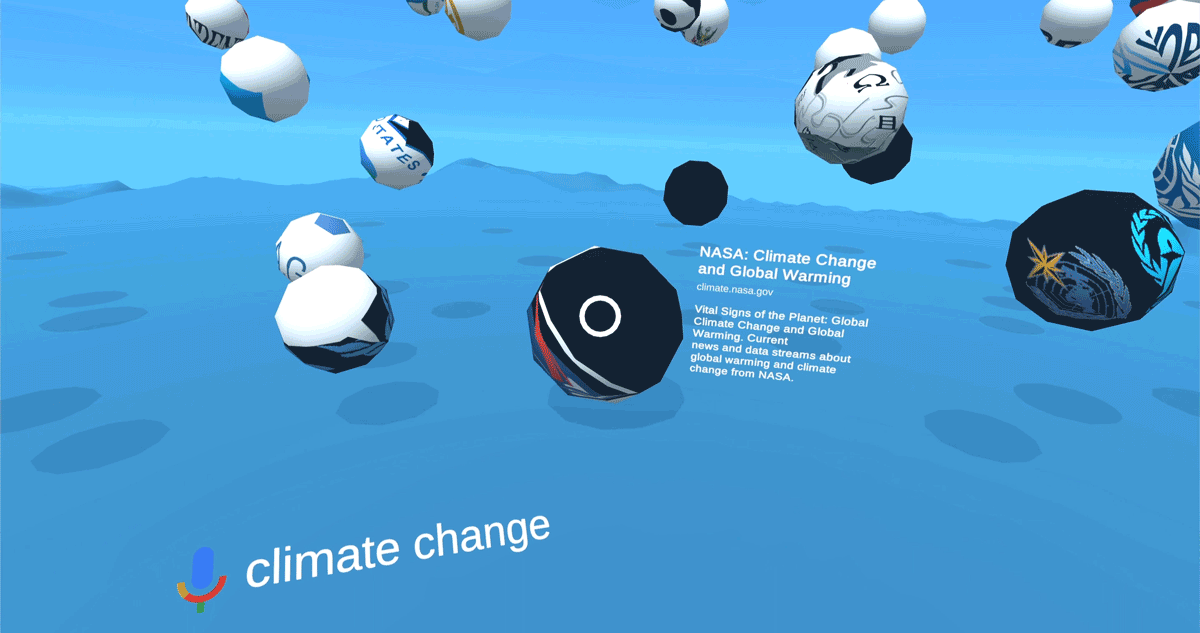
Expand the results and see additional info about the source
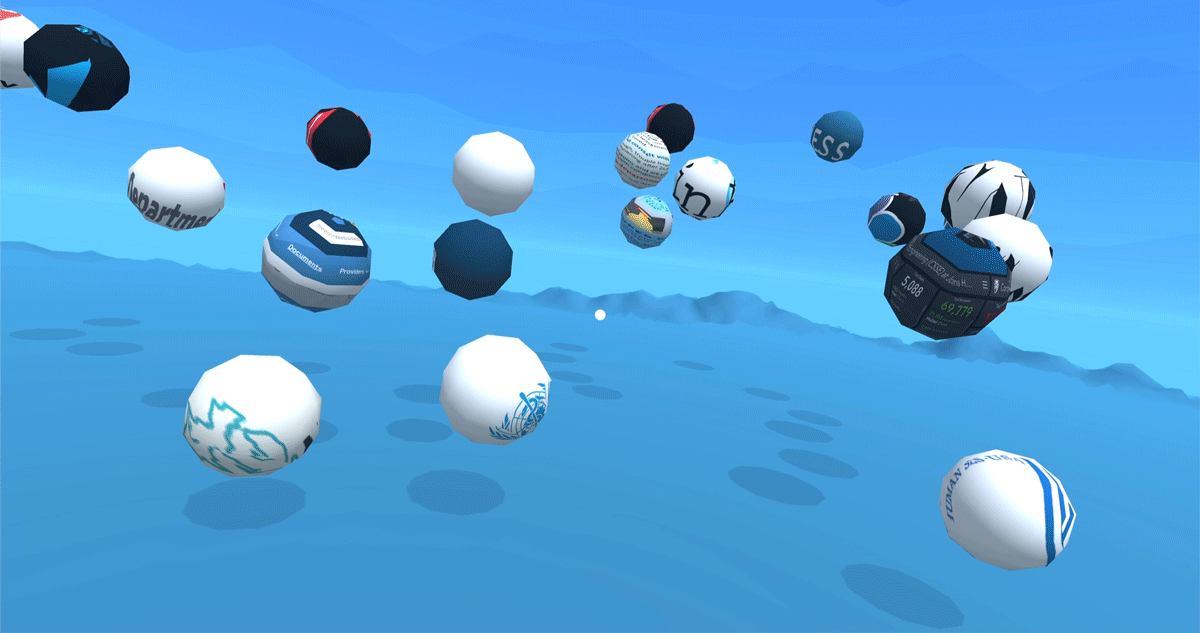
Rearrange results in space
Applications
The emerging VR/AR/MR technology presents a new set of challenges and opportunities in the way we consume and interact with information. As mixed reality technology becomes more accessible, we must reassess the impact it will have in the way we interact with information. Information will continue to grow, data will continue to become ubiquitous, and our ability to navigate the world of information in a mindful way will become increasingly important.
With nearly 71 thousand Google queries being made in every second around the world, the search engine has a tremendous potential to influence culture and society. As a key platform for information consumption in the Digital Age, Search Engines could use this newfound medium as an opportunity to reshape our interactions with digital information.
Other projects
Habit Building Companions







